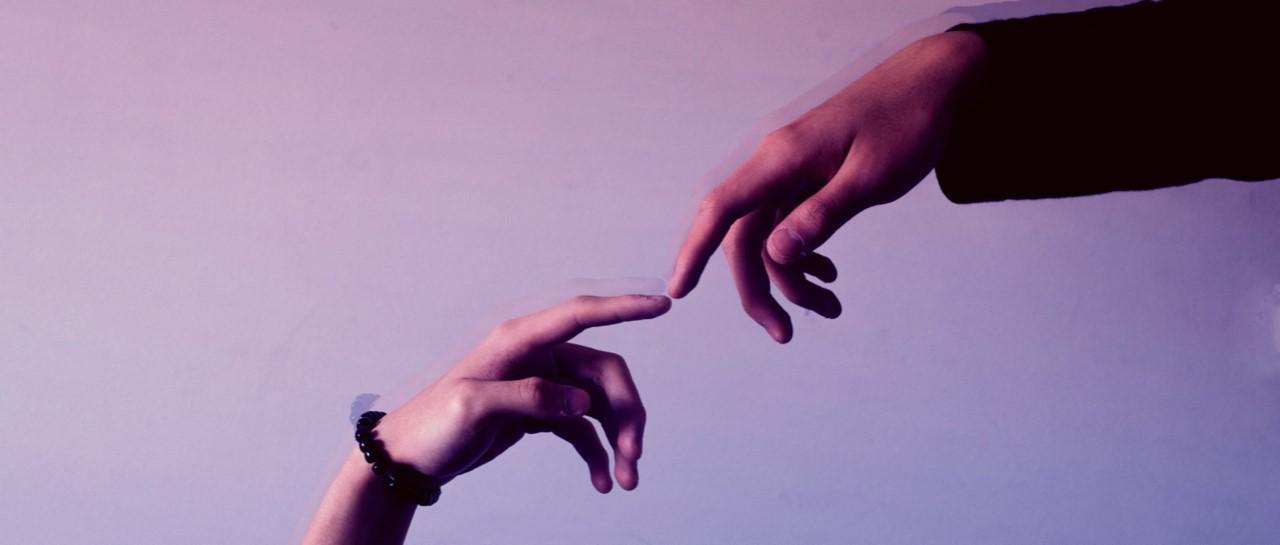
How to cope if your teen is self-harming
Peer reviewed by Dr Sarah Jarvis MBE, FRCGPLast updated by Allie AndersonLast updated 18 Feb 2020
Meets Patient’s editorial guidelines
- DownloadDownload
- Share
- Language
- Discussion
Fourteen-year-old Chloe had always seemed like a happy, sociable child with plenty of friends. But as she approached adolescence, things began to change. What started out as some problems at school soon escalated and before long, Chloe was spiralling.
In this article:
"Through spring 2018, she was in a period of intense mental health crisis and she had started self-harming," recalls Chloe's mum, Cathy. "Unbeknown to me at the time, she'd been buying razors and pencil sharpeners, taking the blades out, and using them to cut herself."
Chloe was referred to her local child and adolescent mental health service (CAMHS), and it was during an appointment with a counsellor that Cathy discovered her daughter had self-harmed. "She always wore sleeves and until then, she'd hidden it really well," Cathy says. "When I saw her arms and found out what had been happening, I was quite visibly shocked and upset. I just wanted to keep my child safe."
Continue reading below
Troubling figures
Sadly, many parents find themselves in Cathy's position. According to mental health charity Young Minds, around one young person in twelve self-harms, with prevalence among those aged 15-16 as high as one in ten. But this figure is based on reported self-harm cases, and accounts for young people who have presented to A&E or other medical or social services. As such, it probably doesn't reflect the full picture.
And, as clinical psychologist Dr Nihara Krause points out, self-harm is much more common among youngsters who have been diagnosed with a mental health problem. "Very occasionally, someone might self-harm because they're curious," she explains.
"These people aren't mentally ill, and they very quickly give up the behaviour. Most of the time, though, people who self-harm do so because they have a mental health problem. They are usually expressing some kind of emotional pain that they find difficult to talk about."
In fact, it's thought that as many as 25% of girls aged 17-19 with a mental health diagnosis have self-harmed.
Different behaviours
Commonly, self-harm involves people cutting themselves - often their arms and sometimes other parts of their body. People might hurt themselves by burning or scratching their skin, or hitting walls. "Sometimes a person might punch a window, for example, not because they're angry but because they want to feel the pain," Dr Krause says.
There are crossovers between some forms of self-harming behaviour and mental health conditions, too. Hair pulling can be used to self-harm but can also be a form of obsessive-compulsive disorder (OCD). Heavy drinking or binge eating, while most commonly associated with addiction or disordered eating, is sometimes behaviour used to self-harm.
"In this case, a person might binge eat until their stomach hurts," explains Dr Krause. "The behaviour itself is almost irrelevant - it's the intention behind it that's important." When people self-harm, that intention is to hurt or injure themselves. As well as conveying emotional distress, it can be a way for people to punish themselves or to relieve overwhelming tension or anxiety.
Whatever the reason behind the behaviour, the most important thing is to seek help.
Continue reading below
Lack of support
Help is not always easy to find, though. A 2019 study examining self-harm prevalence found that not only is it on the rise, but also that around half of people who self-harm do not get any psychological support.
When they do, they face waiting months - sometimes years - to see a specialist and get the most appropriate help, leaving vulnerable teens in limbo and their worried parents not knowing what to do for the best.
When Chloe was waiting for specialist help, Cathy was forced to stand by and watch her daughter continue to hurt herself. "We were advised by CAMHS when she was at her worst point that cutting herself was helping her - it was her release - so we should let her do it," Cathy says. "This goes against everything you feel as a parent, because you know she's hurting and you want to stop it, not encourage it."
While this advice is certainly counter-intuitive, it is occasionally appropriate in some very specific cases, Dr Krause explains.
"The behaviour has a function, and if the young person or child hasn't been taught an alternative coping strategy that's safe, and if they're stopped from doing what helps them cope, they might try something else that's even riskier or more severe," she says. This might be the case if a teen has suicidal thoughts, and self-harms to stop themself acting on those thoughts.
"I would only ever suggest keeping the self-harm behaviour as a temporary measure, working with the young person and their family to move forward as part of a step-by-step process to phase it out," Dr Krause adds.
The focus, in that instance, should be on helping the person make their self-harming behaviour as safe as possible. If the youngster cuts themself, for example, make sure their cuts are clean, that they don't reuse the same implement, and that they look for something less sharp to use. And to reiterate, this should only ever be a temporary measure while they work towards addressing the issues that lead to the urge to self-harm.
Out of harm's way
Cathy followed this advice to help Chloe to cut more safely. And together, they explored other ways for Chloe to release her emotions. "We found smells that she likes and finds comforting, and she realised that pacing up and down helps soothe her, too," Cathy says.
There are many other strategies people can use to help with self-harm. Different ones work for different people, and a young person may try several before finding one that works for them. Options to try when the urge to self-harm hits include:
Putting off self-harm by just five minutes, then six, then seven.
Keeping the items you use to self-harm in a hard-to-open box so it takes time to get them out.
Keeping a stress ball to squeeze.
Keeping an elastic band on your wrist and pinging it hard.
Keeping a supply of pens and paper to write down your feelings, or drawing.
Listening to your favourite music, and perhaps dancing.
Going for a walk or a run.
Using a red pen to draw on the place you want to cut.
Writing words on your skin with a red maker pen.
Messaging or phoning a friend.
Drawing and cutting out a shape for every day you don't self harm and making a collage of them.
Learning a new skill, such as sewing, knitting or juggling.
Continue reading below
How to react (and how not to)
For many teenagers, the burden of concealing their wounds and hiding their behaviour is as troubling as the emotional distress behind it. So just being open about self-harming is often a huge relief in itself. As a parent or carer, therefore, how you respond to the discovery that your child is self-harming is pivotal.
"I probably didn't handle it very well," says Cathy, who instinctively got very upset. "After that, I did a lot of reading and realised that over-reacting is the worst thing you can do. Obviously, it's very hard, but try to be matter-of-fact about it; to be open and calm."
Dr Krause agrees. "Getting upset is a very common response, but it's important to not be angry or to tell a young person not to be silly. Those are not helpful reactions, because they make the young person feel told off or afraid, and they'll be a lot less likely to come forward." Asking a child why they self-harm is also unhelpful, she says, because often they don't know.
She suggests the best way to tackle self-harm and any mental health or emotional problem is to get to know your child, and to ask about what's going on in their life. "Try to explore possible triggers and help them to understand that there might be something happening that drives the behaviour, so then you can start to make a change."
Getting help
The first step is to talk with your GP, who will be able to refer your child to appropriate services, and signpost other resources in your area. Meanwhile, there are several organisations that provide support and advice, including stem4, the charity Dr Krause founded to promote positive mental health in teenagers.
Among its resources is a free app for parents, called Combined Minds, which provides tips on dealing with challenges like self-harm that focus on the child's strengths. There is also a free app for teenagers, called Calm Harm, which follows evidence-based treatment principles to help teens find alternative coping strategies to manage their self-harm.
Other organisations that can help teenagers and parents include Young Minds, NSPCC, and Samaritans. If someone has hurt themself and is in immediate danger, call an ambulance.
Dr Krause is quick to reassure that there is a light at the end of the tunnel. "Self-harm is very common, but it's also very treatable if you get it early and if you take the right steps to change," she says. "There is every chance of a very positive outcome."
Patient picks for Mental health and behaviour

Children's health
How to help your child cope with exam stress
The exam period is a stressful time. For young people sitting their SATs, GCSEs, A-levels or university exams, it’s common to feel overwhelmed and anxious. And watching your child experiencing stress as they sit exams can be very hard too. However, there are steps you can take to help them cope.
by Lydia Smith

Children's health
Winter babies at greater risk of mental health problems
Infants born in winter months may be more susceptible to mental health problems, according to researchers at Cardiff University.
by Ashwin Bhandari
Continue reading below
Article history
The information on this page is peer reviewed by qualified clinicians.
18 Feb 2020 | Latest version
18 Feb 2020 | Originally published

Ask, share, connect.
Browse discussions, ask questions, and share experiences across hundreds of health topics.

Feeling unwell?
Assess your symptoms online for free
Sign up to the Patient newsletter
Your weekly dose of clear, trustworthy health advice - written to help you feel informed, confident and in control.
By subscribing you accept our Privacy Policy. You can unsubscribe at any time. We never sell your data.